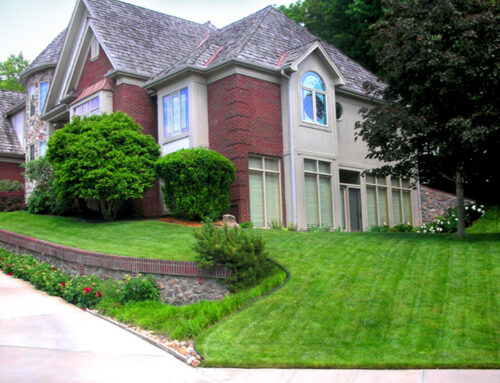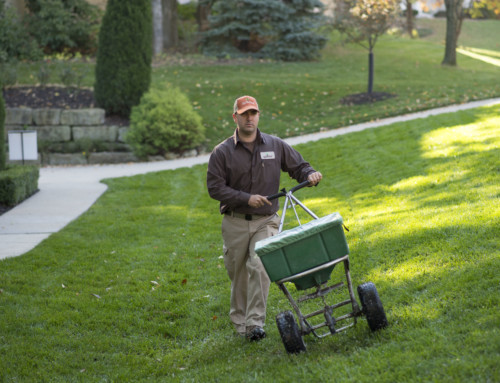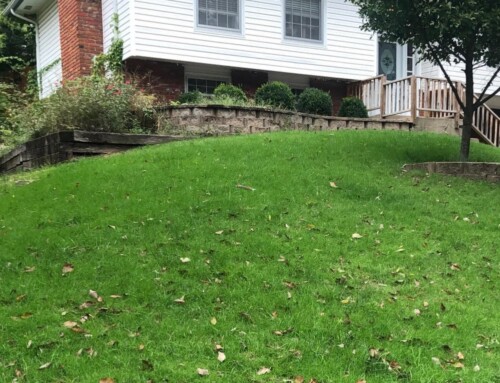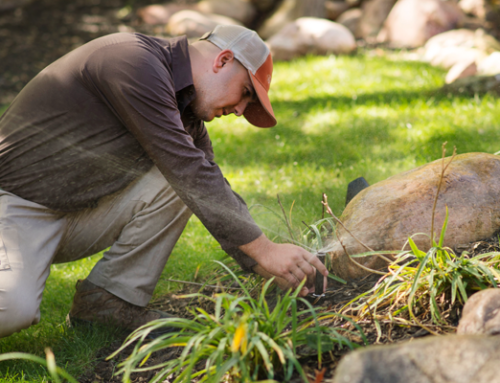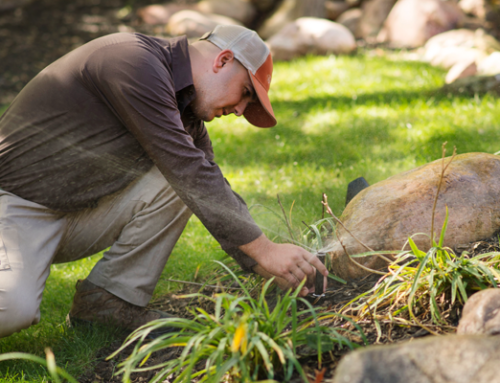The method and timeline for your lawn fertilization can depend on quite a few different things. Your goals and needs for your lawn, budget, and physical ability to do it yourself are just a few to name. Here we will address when you should fertilize your lawn, seasonal fertilization, and how to hire a professional to take care of all of this for you!
When To Fertilize
To begin, here is a typical fertilizing schedule over the course of a four-season year:
- First treatment is applied in early spring,
- The second is applied at the end of the spring season.
- The third is applied in mid-summer
- A fourth treatment occurs in early fall,
- And a fifth and final treatment is usually applied in late fall.
- Occasionally, a winter application is also recommended.
Spring Fertilization
The first two treatments of the year are arguably the most important. These applications will boost the growth of your lawn more than any other treatment throughout the year. Both post-emergent and pre-emergent weed treatment should be included. The post-emergent will take care of any weeds that may have already germinated while the pre-emergent is more of a preventative measure for those that may come during the summer months.
Summer Fertilization
In most cases, a lighter application is recommended for the summer months. This treatment will serve to encourage color and growth throughout the hot, dry season.
Fall Fertilization
Depending on the health of your lawn, the fall treatment will often be applied in combination with seed to promote germination and also to address any weeds that may appear during the fall.
Winter Fertilization
During winter, many people choose to apply an additional fertilization treatment. A winter treatment will serve to maintain color and health during the cold season and help to prepare it for a healthy coming spring.
If you are going to try and tackle your fertilizing schedule on your own, here is a helpful tip: use your local CO-OP or locally owned lawn and garden shops. These resources often much more knowledgeable staff than your average big lawn and hardware department store.
Why hiring help will make your life 10x easier:
One of the biggest challenges of DIY fertilization is taking care of the weeds that have already germinated. To get rid of these, you’ll most likely have to use a granular weed and feed which won’t be effective unless applied first thing in the morning when the grass is still wet with dew. This is because the particles need to stick to the leaves on the weeds in order to work its magic. But the pro’s make it much easier with their giant tanks of chemical, getting the job done in one fell swoop.
To learn more about the best care for your lawn during this season, call your local Kansas City Lawn Care company, By the Blade KC!


